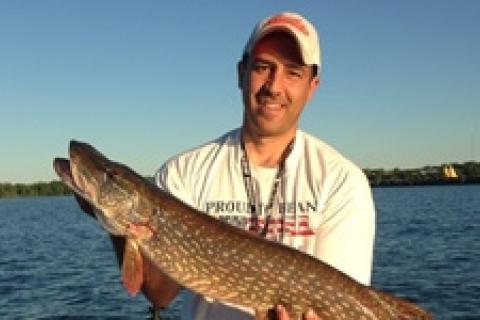
If you have visited your local fly shop recently I am sure you have been astounded with the number of styles, lengths and weights of fly rods available.
Does anybody really need this many different fly rods just to fish? Of course not, but these differing rods are for the angler who is looking to do a lot of certain style of fly fishing. For example you wouldn't want to use a short, light rod for casting bass flies off a boat in windy conditions nor would you want to use a long fly rod in the tight confines of an over grown stream. Fishing can be frustrating enough on it owns when the bite turns off rather than adding in rod problems.
If you want to get into fly fishing but don't know where to start with a rod lets simplify things a little bit. The first consideration is whether or not you plan fishing out of a boat? If you are planning on using your fly rod out of a boat then you should be thinking of a 9-foot rod. Having the extra length to the rod here will help you keep the fly line off the water on the backcast and give you a bit more distance. It helps to also think what type of fish you might want to fish for with this rod as this determines the weight for the rod. See the table below for quick summary of the different rod weights and how they apply to fish.
Rod Weights
| Fish Species | 2, 3, 4 | 5, 6, 7 | 8, 9, 10+ |
| Panfish, Bass | XXX | ||
| Pike, Walleye | XXX | ||
| Trout (in a lake) | XXX | ||
| Muskie | XXX |
The size and fight of the fish definitely affects the rod weight that you are going to choose (the bigger the fish the heavier will need to be) but so does the type and size of flies. For example muskie surface flies are big wind resistant patterns so having a heavier weight rod (9-foot, 9-weight or bigger) with a solid backbone will help you get those flies out to where the fish are.
If you are planning on using you rod for fishing the river or wade fishing lakes, then you should be thinking about the distances you will need to cast. In most cases on lake shorelines or small rivers, you should be able to wade close to your targets so lighter rods can be used. Especially on smaller rivers banks can be overgrown making 7- or 8-foot (2/3 weight) rods ideal. You will be able to maneuver these rods around obstacles and still present flies accurately to fish.
If you plan on fishing bigger faster flowing rivers (ones that you cannot wade across) then you will want to go for the 9-foot length again a size up to a 4 or 5 weight. If you are planning on fishing a river that gets a run of spring or fall trout (steelhead or salmon) make sure you size up again appropriately. Big fish punish light rods and snapping a rod part way through you day makes for a long, sad walk home. If you plan on doing a bit of everything then a general 9 foot 5/6 weight rod should do the trick. These rods are versatile enough to fish poppers for bluegills to zonker minnows for pike.
A good idea is to head to your local fly shop and see what rod lengths and weights feel best to you. There is not too much difference between most 4 or 5 weight rods (in the same price range) but one brand might feel completely different when you cast it. Get the rod that feels most comfortable too you, that way you will be more inclined to use it.
- 2552 views

